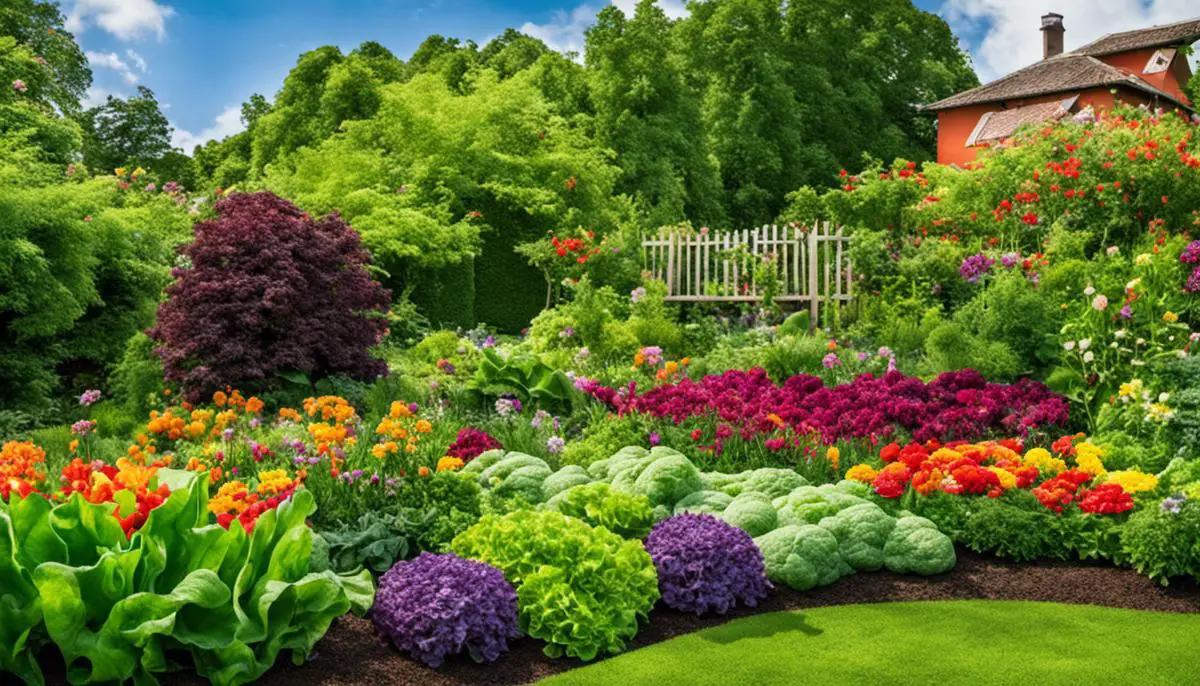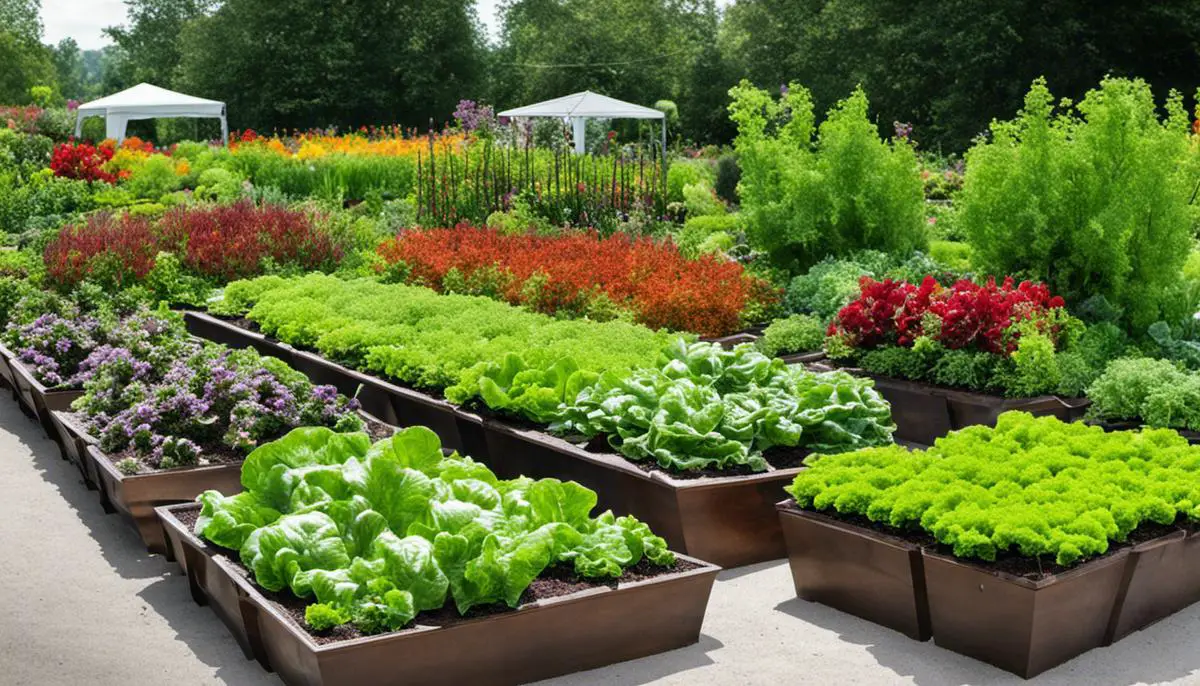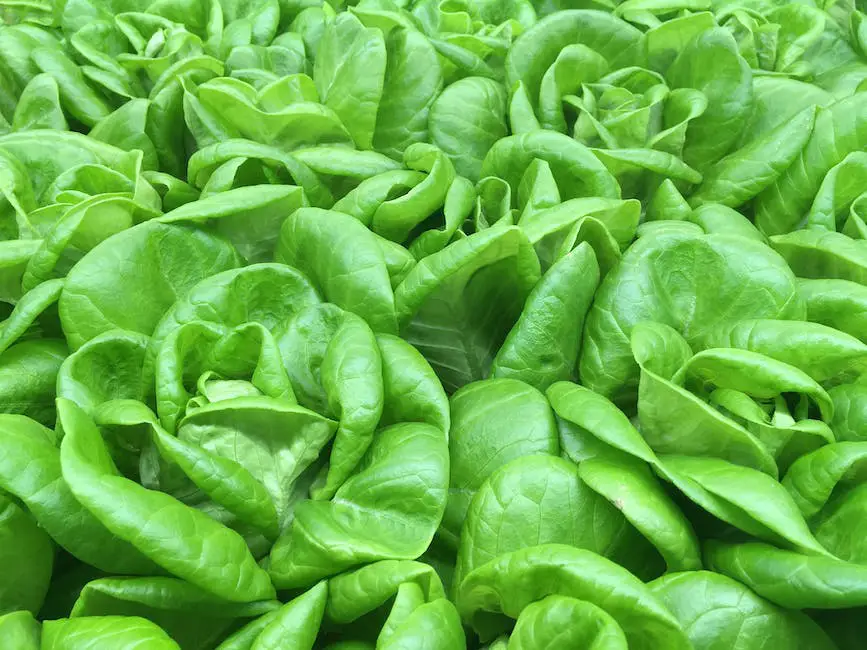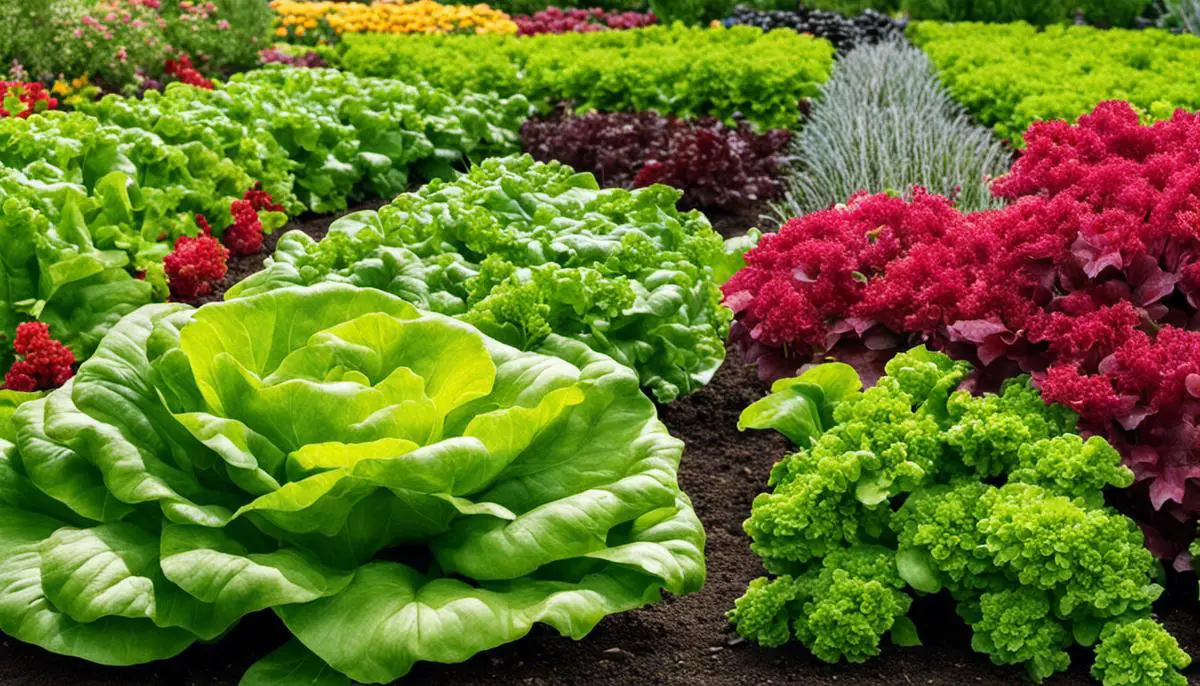Imagine cultivating your garden, where vibrant green lettuce stands proudly, kissed by the sun, surrounded by its companion plants, each telling a unique story of symbiotic relationships. In the world of gardening, these stories are of utmost importance. Companionship is as critical amongst plants as it is for us humans, and this intriguing concept is known as companion planting. Our focus rests on one such unassuming hero of the garden – the lettuce. We will delve into understanding the magic formula of pairing lettuce with the right companions and harvesting the benefits it yields – from natural pest deterrents, soil enrichment to flavor enhancement and much more.
What are Companion Plants for Lettuce and Why are They Important
The Benefits of Companion Planting for Lettuce: A Must-Know for Every Gardener!
Avid gardeners understand that the vegetable patch is more than a monotonous grid of individual plants. It’s a dynamic community where certain combinations can perform better, especially when grown together. These beneficial partnerships, known as companion planting, can help improve the health and yield of your lettuce. So let’s dive into the world of companion planting and unveil why it’s beneficial to grow certain plants with our beloved lettuce.
Reader Poll: What online courses would interest you?
Firstly, companion plants can deter pests. Did you know that marigolds, an easy-to-grow annual flower, can act as a natural pest repellent? Known for their bioactive compounds, marigolds can deter nematodes, aphids, and even rabbits which just love nibbling on lettuce leaves. A vibrant patch of marigolds among your lettuce crop can add not only color but also serve as a natural guard against pest invasions.
Secondly, companion plants can act as a living trellis, providing lettuce with some much-needed shade. For instance, taller crops like corn and sunflowers, when planted strategically, can create a natural sun shield for lettuce. As most seasoned lettuce growers know, lettuce prefers cooler conditions and can rapidly bolt (flower prematurely), turning bitter when exposed to full sun. Thus, providing natural shade helps to extend the lettuce harvest season, especially during those hot, sunny days.
Companion planting offers another interesting benefit: the improvement of soil health. Some plants, especially legumes like peas and beans, can enhance soil fertility. These plants fix atmospheric nitrogen into the soil, which can then be used by lettuce plants for growth. As lettuce is a heavy feeder, rotating it with these nitrogen-fixing plants can be an excellent strategy to maintain soil fertility year after year.
Subscribe to our newsletter!
Then there’s aromatic herbs. While they add flavors to our meals, herbs like dill, parsley, and mint can attract beneficial insects, including pollinators and predators of common pests. As neighboring plants to lettuce, they can bring balance to your garden ecosystem, making it a haven for the good critters while discouraging the bothersome ones.
Interestingly, companion planting can also aid in water conservation. Chunky vegetables such as squash or pumpkin can shade the soil from sunlight, reducing evaporation and enabling more efficient water use in the lettuce patch.
So, as lettuce aficionados, embracing the concept of companion planting can provide multi-faceted benefits to our gardens. It can enhance biodiversity, boost lettuce yield, mitigate pest issues, and even make our garden aesthetically pleasing. Indeed, cultivating lettuce isn’t just about rows and rows of leafy greens, it’s about fostering a vibrant, thriving plant community that not only survives but thrives together, just like us, in our hobbyist garden community.

Top Lettuce Companion Plants to Boost Your Harvest
Unveiling Power Pairs: The Best Companion Plants for Lettuce
When it comes to cultivating nutritious lettuce in your garden, it’s not just about the green, leafy star of the show. The garden’s ensemble cast of companion plants can have a profound impact on lettuce growth, all while lending a hand (or root) in pest management, soil enrichment, and overall garden biodiversity. Beyond what has already been covered about lettuce and companion planting, let’s dive into an exploration of specific best companions for lettuce and the unique benefits they confer.
Radishes: These quick-growing veggies are lettuce’s best friend against a common foe – the aphid. Known to deter the pesky insects, radishes, when planted alongside lettuce, create an aphid-resistant environment, resulting in healthier lettuce leaves brimming with vitality.
Spinach: As bedfellows, lettuce and spinach share a mutual love for cool environments. When planted together, they can reciprocate shade in bright, sun-drenched gardens, ensuring neither becomes too stressed by the heat and maintains their crisp texture and taste.
Mint: As novel as it may sound, and it is not just about providing a refreshing twist to your salad bowl. Mint, in the vicinity of lettuce, repels a wide range of insects, including ants and flea beetles. It’s essential, however, to plant mint in pots or self-contained areas, given its invasive nature.
Beans: What’s better than a leafy salad? A leafy salad with a protein punch! Lettuce and beans are not only a delightful combination in the kitchen, but they also thrive as garden buddies. Lettuce helps maintain soil moisture and eliminate weed competition for beans, while beans, in turn, contribute by enriching the soil with nitrogen, a nutrient lettuce ardently craves.
Onions: Known for their pungent aroma, onions are formidable fighters against a wide array of pests such as slugs, aphids, and cabbage worms that could harm your lettuce crop. Plus, they have shallow roots, hence don’t compete with lettuce for nutrients.
Nasturtiums: This attractive, edible flower serves to lure aphids away from your lettuce patch, acting as a sacrificial crop. Absorbing the pest siege, Nasturtiums ensure your lettuce remains undisturbed and in immaculate condition.
Carrots: Pairing lettuce and carrots is an optimal way to maximize garden space. The leafy tops of carrots provide shade for tender lettuce seedlings in the heat, while their deep roots break up soil, making nutrients more accessible for shallow-rooted lettuce plants.
Diligent application of these companion planting strategies can turn your garden into a vibrant, productive sanctuary teeming with crisp, juicy lettuce. Remember, the path to a successful garden lies in understanding the symbiotic relationships of its dwellers. Armed with these insights, you’re well on your way to harvesting fresh Lactuca sativa that practically begs to take center stage in your next salad preparation. Happy planting!

How to Effectively Plant Lettuce and Its Companions
Complementing our insightful journey into the world of lettuce and companion planting, let’s delve deeper into the specifics of establishing this symbiotic garden design at home. Lettuce, being a cool-season crop, can be a bit picky about its environment, but with the right knowledge and guidance, you’ll be harvesting garden-fresh salad in no time.
Preparation is key when it comes to efficient gardening. Begin by mapping out your garden space. Ensure that your lettuce and its companion plants will have plenty of sunlight, but not too much: lettuce thrives in light shade, particularly during hot afternoons. Also, consider the ease of access to water sources, as these crops will require regular, light watering.
Once you’ve figured out the perfect spot, enrich the soil by adding plenty of well-rotted compost or a slow-release granular fertilizer. Remember, ample nutrients are vital for the growth and health of your lettuce plants. Ensure the soil is loose and drained, as lettuce roots are relatively shallow and standing water can damage the crops.
Planting lettuce seeds or transplants isn’t much of a challenge as they adapt quite well. Space your lettuce plants about a foot apart. This gives every plant adequate nutrients, sunlight, and room to flourish while also preserving the close-knit community needed for companion planting.
The magic begins when we bring in the companion plants. Radishes, beans, onions, carrots, spinach, mint, and nasturtiums not only enliven the garden but also offer practical benefits to lettuce. To efficiently weave this network of companionship, consider their growth habits. For instance, plant radishes and carrots between lettuce plants, their foliage provides light shade, and their deep roots break up the soil, promoting aeration and water penetration.
Beans, the nitrogen-fixers of the garden, should be interspersed among lettuce plants to contribute to soil fertility. Nasturtiums and mint are ideal planted on the edge of your garden patch as their powerful scent deters pests that love lettuce.
The key to successful onion and lettuce companionship lies in the planting arrangement. Alternate rows of onions and lettuce to deter pests and benefit from their distinct growth patterns. Spinach, being another low-growing plant, can accompany lettuce quite snugly across your garden — no need for explicit spaces or rows.
Harvesting should be the pinnacle of joy for every gardener, and understanding the right time to harvest your lettuce is essential. A good rule of thumb is to harvest lettuce when leaves are young and tender, typically before mature seeds set. Collect in the cooler parts of the morning to preserve the most flavor and crunch.
The tapestry of companion planting is as beautiful as it is beneficial. By blending various plants, each contributing their unique abilities, we create a thriving ecosystem that dresses up the garden while enhancing our lettuce yield. Remember, patience, knowledge, and a little experimenting are all part of the gardening journey, every harvest making you a better farmer. So, grab your gloves and get gardening!

We have journeyed through the wonderful universe of companion plants, focusing specifically on lettuce. Discovering this ancient agricultural practice has not just been a guide to boost your harvest but also a testament to nature’s incredible way of nurturing symbiotic relationships. We have learned how marigold, chives, and beans can be helpful allies to our lettuce, playing their unique roles in its growth and protecting it from predators. Armed with the knowledge of the artful layout and efficient watering techniques, you would pave the way to healthier, tastier lettuce. Ultimately, embracing companion planting unlocks an enriching experience of connecting deeper with nature, obtaining a better yield, reducing the need for chemicals, and promoting a more sustainable gardening practice.

